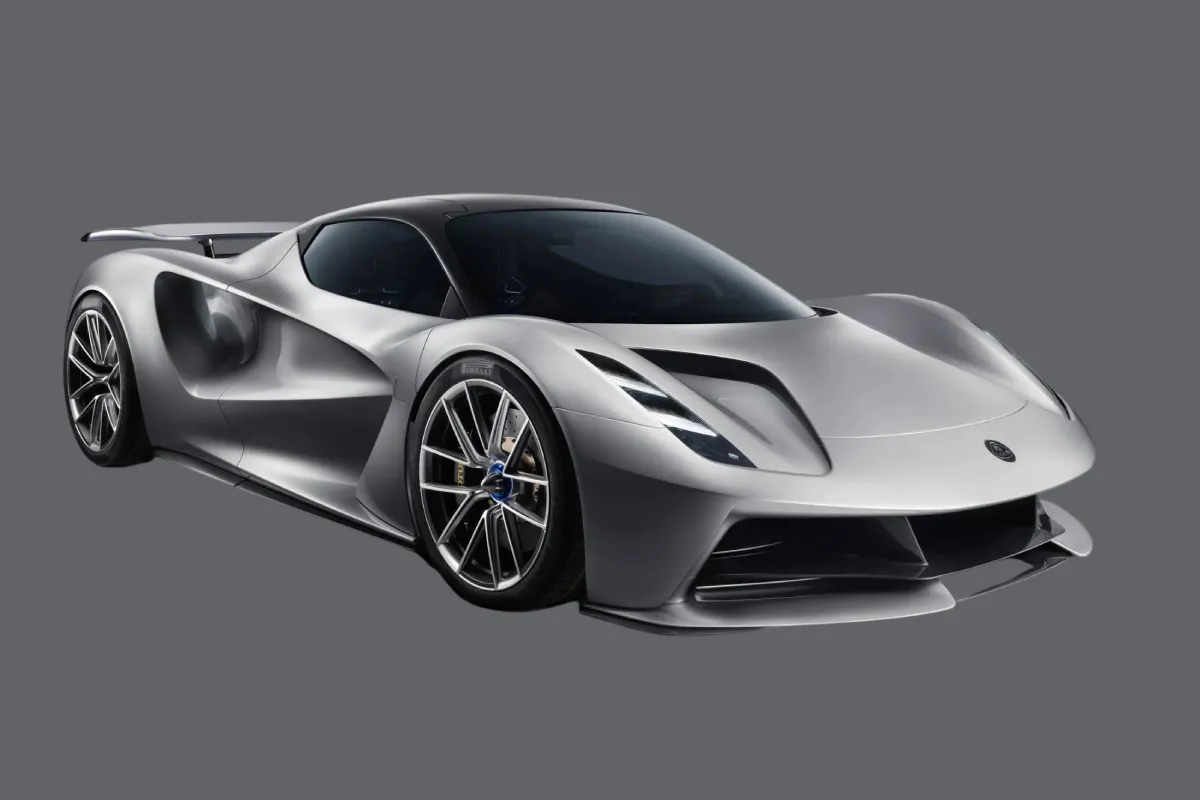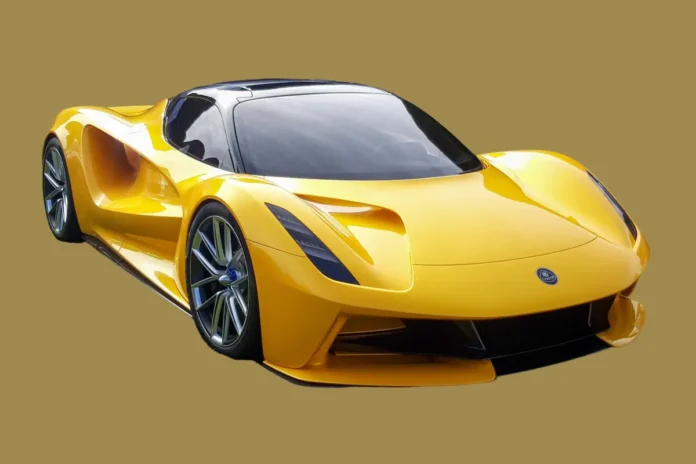Lotus, the iconic British automaker renowned for lightweight, driver-focused sports cars, is navigating a pivotal moment in its storied history. With the automotive industry racing toward electrification, Lotus is embracing this shift with a bold strategy: a trio of hyper-hybrid vehicles designed to redefine performance and sustainability. But can these ambitious models revive a brand facing financial and market challenges? CommaFast explores Lotus’s electrified journey, its cutting-edge technology, and whether these new offerings can secure its legacy in a competitive landscape.
A Legacy of Lightweight Performance
Founded in 1948 by Colin Chapman, Lotus has long been synonymous with agility and precision. The brand’s mantra, “adding power makes you faster on the straights, subtracting weight makes you faster everywhere,” has guided iconic models like the Elise, Exige, and Evora. However, as global regulations tighten and consumer demand shifts toward electric vehicles (EVs), Lotus faces the challenge of preserving its heritage while adapting to a new era. The company’s recent struggles, including financial constraints and production delays, have raised questions about its future. Yet, Lotus is betting on electrification to spark a renaissance.
The Electric Pivot: Lotus’s Bold Strategy
In 2019, Lotus unveiled its first all-electric hypercar, the Evija, a 2,000-horsepower marvel priced at over £2 million. While the Evija showcased Lotus’s engineering prowess, its limited production run and high cost made it more of a halo car than a mainstream solution. Recognizing the need for broader appeal, Lotus has shifted focus to a new lineup of hyper-hybrids—vehicles that combine electric power with internal combustion engines to deliver thrilling performance with improved efficiency. These models aim to bridge the gap between Lotus’s purist roots and the demands of modern mobility.
The Hyper-Hybrid Lineup
Lotus’s upcoming trio of hyper-hybrids includes a mix of SUVs, saloons, and sports cars, each designed to blend electrification with the brand’s signature driving dynamics. Here’s a closer look at these groundbreaking models:
| Model | Type | Powertrain | Expected Range | Key Features |
|---|---|---|---|---|
| Emeya | Electric Saloon | Dual electric motors, hybrid option | ~300 miles | Advanced aerodynamics, 900+ hp |
| Eletre | Electric SUV | Dual electric motors, hybrid option | ~280 miles | Luxury interior, fast-charging capabilities |
| Type 135 | Sports Car | Hybrid powertrain | ~250 miles | Lightweight design, sub-4-second 0-60 mph |
Table: Lotus’s Upcoming Hyper-Hybrid Lineup
Emeya: A High-Performance Saloon
The Lotus Emeya is a sleek, all-electric saloon with an optional hybrid variant. Boasting over 900 horsepower, it rivals hypercars while offering a practical range of around 300 miles. Its advanced aerodynamics and active suspension ensure the razor-sharp handling Lotus is known for, making it a compelling choice for enthusiasts seeking electrified luxury.

Eletre: Redefining the SUV
The Lotus Eletre marks the brand’s first foray into the SUV market. This electric powerhouse delivers blistering acceleration and a luxurious interior, competing with rivals like the Tesla Model X and Porsche Cayenne Turbo GT. With fast-charging capabilities and an optional hybrid powertrain, the Eletre aims to attract eco-conscious buyers without sacrificing performance.
Type 135: A Nod to Tradition
The Type 135 is Lotus’s answer to purists craving a lightweight sports car. This hybrid model combines a compact electric motor with a high-revving combustion engine, delivering a sub-4-second 0-60 mph sprint. Its minimalist design and track-focused dynamics pay homage to Lotus’s heritage while embracing modern technology.
Challenges Facing Lotus
Despite its ambitious plans, Lotus faces significant hurdles. Financial difficulties, exacerbated by parent company Geely’s investment demands, have strained resources. Production delays for models like the Evija have also dented consumer confidence. Moreover, Lotus must compete in a crowded market where established players like Tesla, Porsche, and BMW dominate the electric and hybrid segments. Scaling production while maintaining quality and affordability remains a critical challenge.
Financial Pressures
Lotus’s transition to electrification requires substantial investment in research, development, and manufacturing. Geely’s backing has provided a lifeline, but the Chinese conglomerate’s focus on profitability puts pressure on Lotus to deliver commercially viable vehicles. Balancing premium pricing with mass-market appeal is a delicate act.
Market Competition
The electric vehicle market is fiercely competitive, with brands like Tesla offering long-range EVs and Porsche delivering performance-oriented hybrids. Lotus must differentiate itself through superior driving dynamics and innovative design to capture market share. Its British heritage and focus on lightweight engineering could be key differentiators.
The Technology Behind Lotus’s Hyper-Hybrids
Lotus is leveraging cutting-edge technology to ensure its hyper-hybrids stand out. Key innovations include:
- Advanced Battery Systems: Lotus’s EVs use high-density batteries for extended range and rapid charging, with some models capable of adding 100 miles of range in under 10 minutes.
- Lightweight Materials: Carbon fiber and aluminum chassis keep weight low, preserving Lotus’s signature agility.
- Intelligent Aerodynamics: Active aero elements, such as adjustable spoilers and air vents, optimize downforce and efficiency.
- Connected Systems: Over-the-air software updates and AI-driven driver aids enhance performance and user experience.
These technologies not only boost performance but also align with global sustainability goals, making Lotus a contender in the eco-conscious automotive space.
Can Hyper-Hybrids Save Lotus?
The success of Lotus’s hyper-hybrid lineup hinges on several factors. First, the brand must deliver on its promise of thrilling performance without compromising on range or practicality. Second, it needs to navigate production challenges to meet demand and maintain quality. Finally, Lotus must effectively market its vehicles to a new generation of buyers while retaining its loyal fanbase.
Opportunities for Growth
The growing demand for electric and hybrid vehicles presents a significant opportunity. According to the UK’s Society of Motor Manufacturers and Traders (SMMT), EV registrations rose by 18% in 2024, signaling strong consumer interest. Lotus’s focus on performance-driven hybrids could appeal to enthusiasts who are hesitant to abandon the visceral feel of combustion engines.
Risks and Uncertainties
However, risks remain. High production costs could drive prices beyond the reach of mainstream buyers, limiting Lotus’s market penetration. Additionally, any further delays or quality issues could erode trust in the brand. Lotus must also contend with rapidly evolving EV technology, where competitors are constantly raising the bar.
The Road Ahead for Lotus
Lotus’s pivot to hyper-hybrids is a bold gamble, but one that could redefine the brand for the electric age. By blending its heritage of lightweight performance with cutting-edge electrification, Lotus aims to carve out a niche in a crowded market. The Emeya, Eletre, and Type 135 represent a diverse lineup capable of appealing to both traditionalists and new buyers. If Lotus can overcome its financial and operational challenges, these vehicles could spark a revival, cementing its place as a leader in performance-driven electrification.
Conclusion
Lotus’s journey into electric and hybrid vehicles is a testament to its resilience and innovation. The brand’s new hyper-hybrid lineup combines thrilling performance with sustainable technology, offering a glimpse into the future of automotive excellence. While challenges remain, Lotus’s commitment to its core principles—lightweight design, driver engagement, and cutting-edge engineering—positions it for a potential comeback. As the automotive world watches, CommaFast believes Lotus’s hyper-hybrids could indeed save the day, delivering a new chapter for this iconic British marque.




